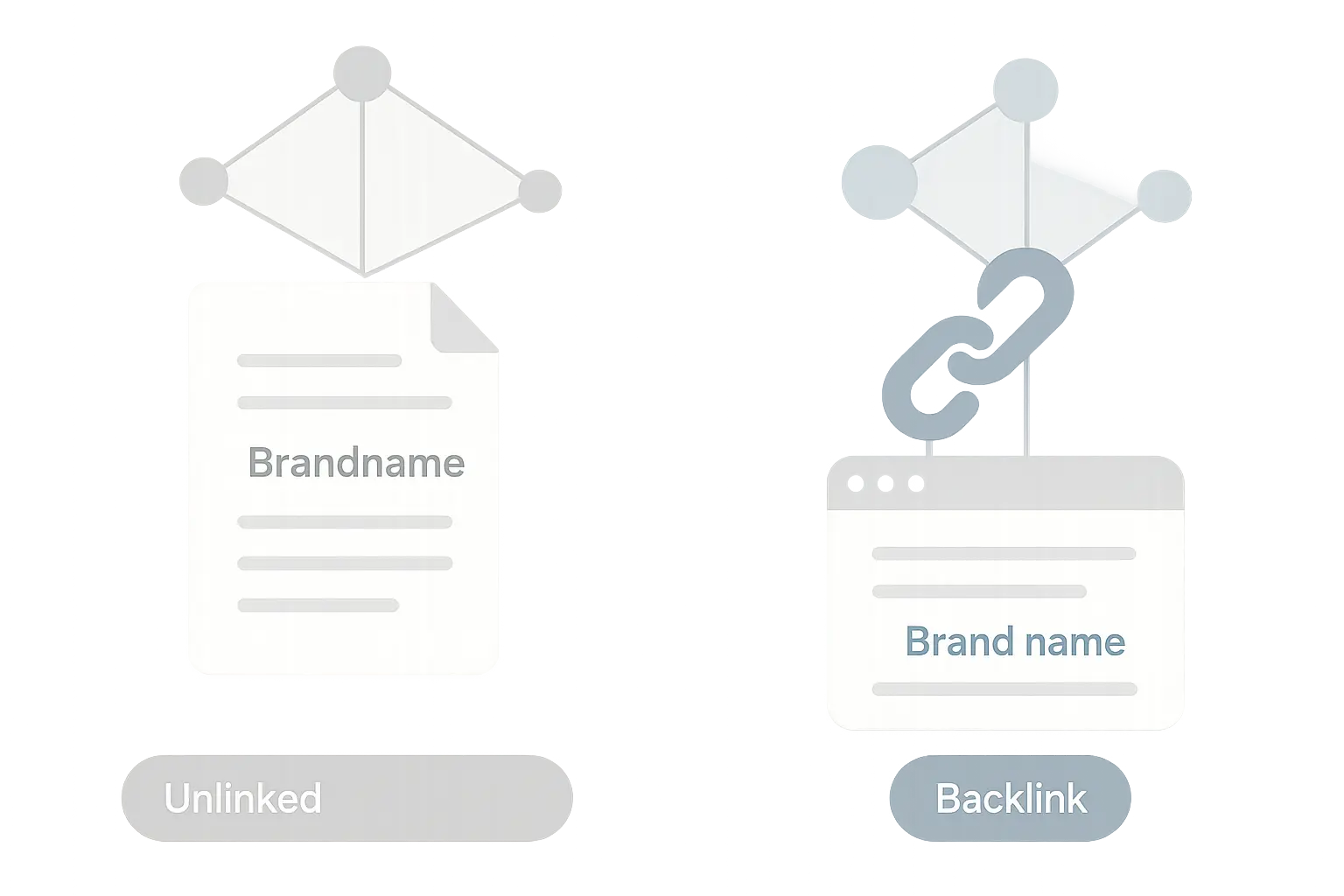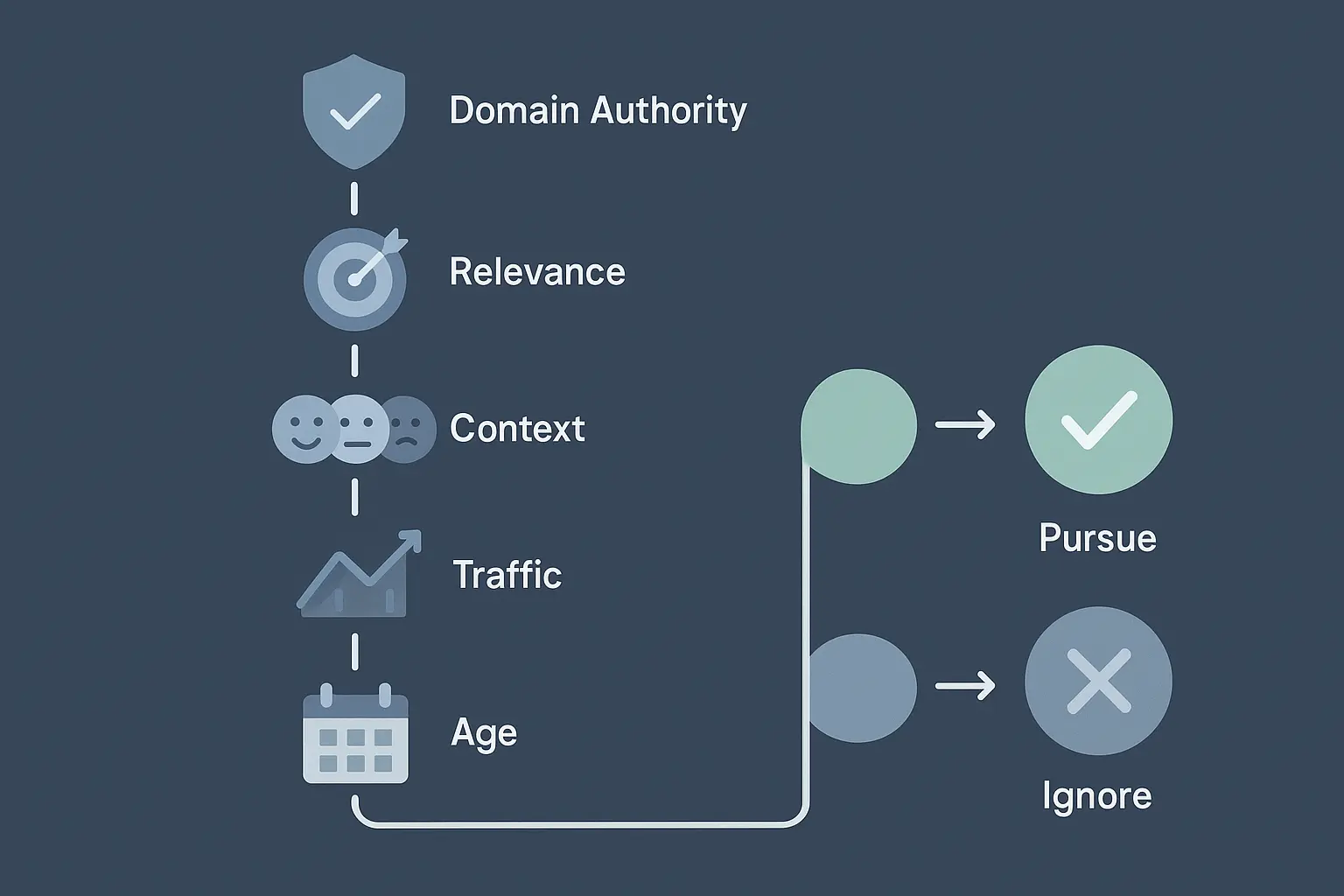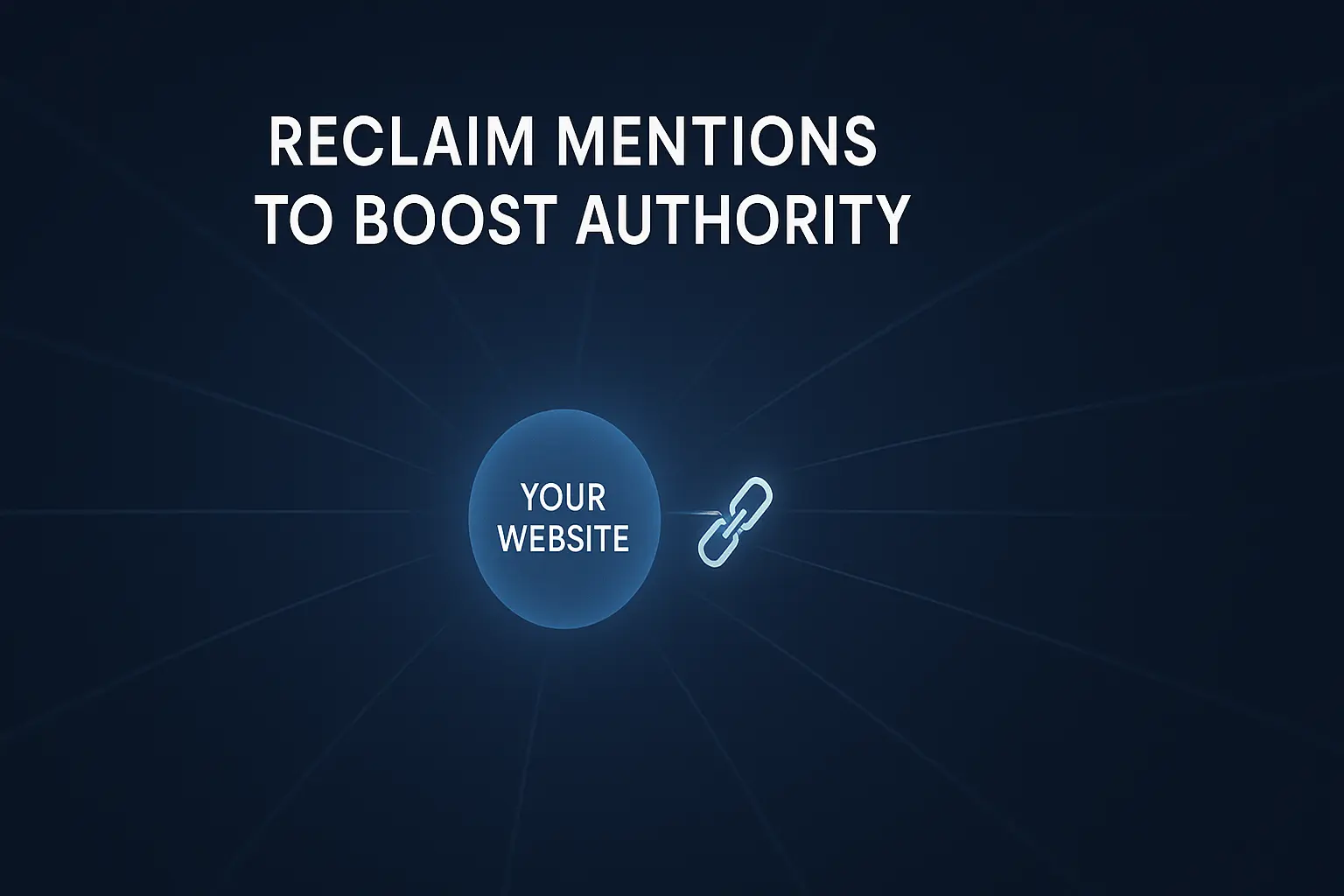Ever had someone mention you in a conversation at a party? It feels good, right? Someone is talking about your work, your brand, your story. Now, imagine they tell the whole room about you, but when someone asks how to find you, they just shrug.
That’s what an unlinked brand mention is online: a compliment that gets lost in the digital ether, a missed connection. Someone has taken the time to write about your company, product, or service, but they haven’t included a hyperlink back to your website.
It might seem like a small oversight, but in the world of SEO, it’s a massive missed opportunity. The good news? It’s also one of the easiest and most effective ways to build your website’s authority. This guide breaks down how to find these hidden gems and turn them into powerful backlinks that search engines love.
What Are Unlinked Brand Mentions (and Why Should You Care)?
An unlinked brand mention is any online reference to your brand, products, key people, or unique taglines that doesn’t link back to your website. These can appear in blog posts, news articles, reviews, or forum discussions.
So, why should this be at the top of your to-do list?
Because the hardest part of link building is already done. A writer or editor already knows you, trusts you, and felt you were valuable enough to mention. You aren’t a cold email out of the blue; you’re a known entity. You just need to give them a gentle nudge to complete the connection.

The value of this connection is immense. According to a study by Ahrefs, there’s a clear positive correlation between the number of websites linking to a page and the amount of organic traffic it receives. And as Google’s own Andrey Lipattsev confirmed, links remain one of the top three ranking factors. Reclaiming mentions is a direct path to acquiring the very links that Google values most.
Think of each link as a “vote of confidence.” The more high-quality votes you have, the more search engines see your website as a credible, authoritative source, directly boosting your domain authority and, in turn, your search rankings.
The Hidden Opportunity: Turning Mentions into Authority
Here’s a staggering fact: research shows that a whopping 94% of all blog posts online have zero external links. This tells us two things. First, earning a link is rare and incredibly valuable. Second, most writers aren’t actively against linking out; they often just forget or don’t think to do it.
This is your opportunity.
Every unlinked mention is a pre-qualified lead for a high-quality backlink. The author has already endorsed you. Your job is simply to make it easier for their audience—and search engines—to find you. The context is there, the trust is established, and the request isn’t an ask for a favor but a helpful suggestion that improves their article.
Your Step-by-Step Guide to Reclaiming Unlinked Mentions
Ready to start collecting your well-deserved links? Here’s a simple, three-step process to follow.
Step 1: Find Your Unlinked Mentions
First, you need to find where people are talking about you. You can use a combination of free and paid tools to do this.
- Google Alerts: A free and easy starting point. Set up alerts for your brand name, product names, and even the names of your CEO or key executives.
- Advanced Google Search: Use search operators to find mentions that don’t link to your site. For example, search for: “Your Brand Name” -inurl:yourbrand.com to find mentions of your brand on websites other than your own.
- SEO Tools: Platforms like Ahrefs, SEMrush, or Moz have dedicated “mention monitoring” tools that do this automatically and at scale. They scan the web constantly and deliver a clean list of every time you’re mentioned, with or without a link.
Look for variations of your brand, including common misspellings, to ensure you catch everything.
Step 2: Vet Your Opportunities
Not every mention is worth pursuing. Your goal is quality over quantity. Before reaching out, quickly evaluate each mention based on a few key criteria:
- Website Authority: Is the site reputable? A link from a major industry publication is far more valuable than one from a low-quality blog. Use tools to check the site’s Domain Authority (DA) or Domain Rating (DR).
- Relevance and Context: Is the mention positive and in a relevant context? A passing mention in an article about a related topic is perfect.
- Natural Link Placement: Read the sentence where your brand is mentioned. Would a link there feel natural and helpful to the reader? If so, it’s a prime candidate.
Prioritize the opportunities that offer the highest authority and relevance first. These are your quick wins.
Step 3: Craft the Perfect Outreach Email
This is where the magic happens. Your outreach email should be polite, personal, and helpful—never demanding. The goal is to make it incredibly easy for the editor to say “yes.”
Here’s a simple template that works wonders:
Subject: Quick question about your article on [Article Topic]
Body:
Hi [Author’s Name],
I was just reading your excellent article, “[Article Title].” I especially loved your insights on [mention something specific you enjoyed].
I also wanted to say a quick thank you for mentioning our brand, [Your Brand Name]! We were so happy to see it included.
I had a small suggestion that might provide a bit more value for your readers. Where you mention us, would you be open to adding a link to our site? It would help your audience easily find us to learn more.
Here’s the link for easy reference: [Your Target URL]
Either way, keep up the fantastic work!
Best,
[Your Name]
Notice the tone: it’s appreciative and framed as a benefit to their readers. This focus on mutual value is the key to any successful outreach.
Common Pitfalls to Avoid
As you begin your outreach, keep these “don’ts” in mind to maximize your success rate:
- Don’t Be Demanding: Never suggest they should have linked to you or that you are entitled to a link.
- Don’t Use a Generic Template: Always personalize your email. Use the author’s name and mention a specific detail from their article.
- Don’t Chase Low-Quality Links: If a site looks spammy or irrelevant, just leave it. A bad link can do more harm than good.
- Don’t Forget to Follow Up: People are busy. If you don’t hear back, a single, polite follow-up email a week later is perfectly acceptable.
Scaling the Process: When Manual Becomes Unmanageable
Running this process for your own brand is straightforward. But what happens when you’re an agency managing this for five, ten, or twenty clients? The manual work of finding mentions, vetting sites, crafting emails, and tracking responses quickly becomes overwhelming.
This is where efficiency and process become critical. For agencies looking to add services or scale their existing ones, this kind of high-ROI, time-intensive work is often the first bottleneck they hit. Many find that the most effective solution is to partner with a white-label SEO provider who has the systems and automation in place to handle these tasks at scale, delivering results under the agency’s brand without the overhead.

Frequently Asked Questions (FAQ)
How long does it take to see results from this?
You can get links within days of starting your outreach. The SEO impact, such as improved rankings and domain authority, typically builds over a few weeks to a few months as search engines crawl and credit the new links.
What’s a good success rate for outreach?
This can vary widely, but even a 5-10% success rate is a huge win in link building. Because these are warm leads—not cold outreach—your prospects are far more qualified than average. With general email outreach response rates hovering around 8.5%, hitting that number with this audience is very achievable.
Is it okay to offer payment for a link?
No. This tactic is specifically about reclaiming earned mentions. Offering to pay for a link placement is against Google’s Webmaster Guidelines and changes the strategy from relationship-building to a paid transaction, which carries different risks.
What if they say no or don’t respond?
It will happen. Don’t take it personally. Simply thank them for their time (if they replied) and move on to the next opportunity. The goal is to capture the willing ones, not to force it.
The Takeaway: Your Easiest SEO Win is Waiting
Unlinked brand mentions are more than just missed opportunities; they are a clear signal that your brand is already making an impact. By systematically finding, vetting, and reclaiming them, you can build a powerful backlink profile based on genuine, earned authority.
This tactic is a cornerstone of any smart, growth-focused SEO strategy because it delivers high-impact results with minimal friction. The conversation about your brand is already happening. All you have to do is join in and add the link.


